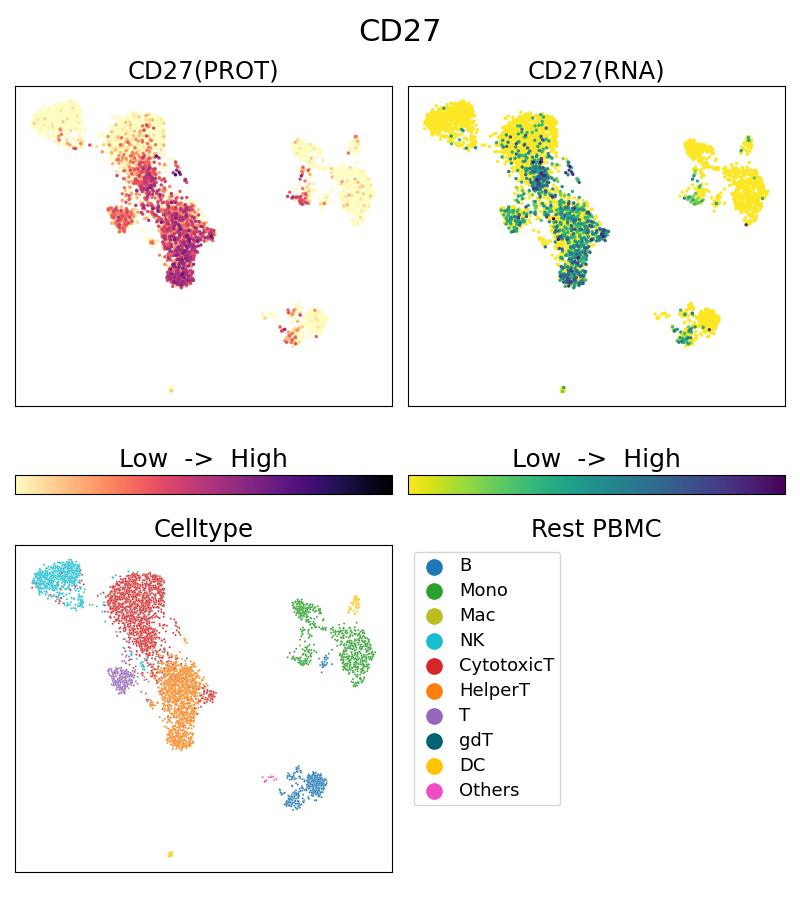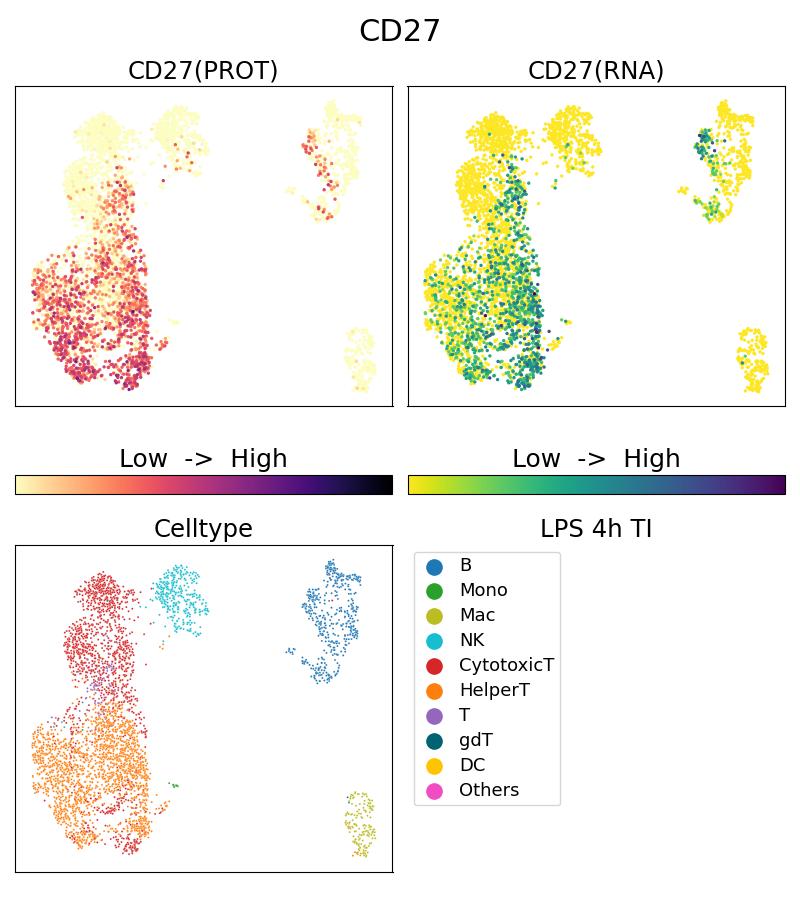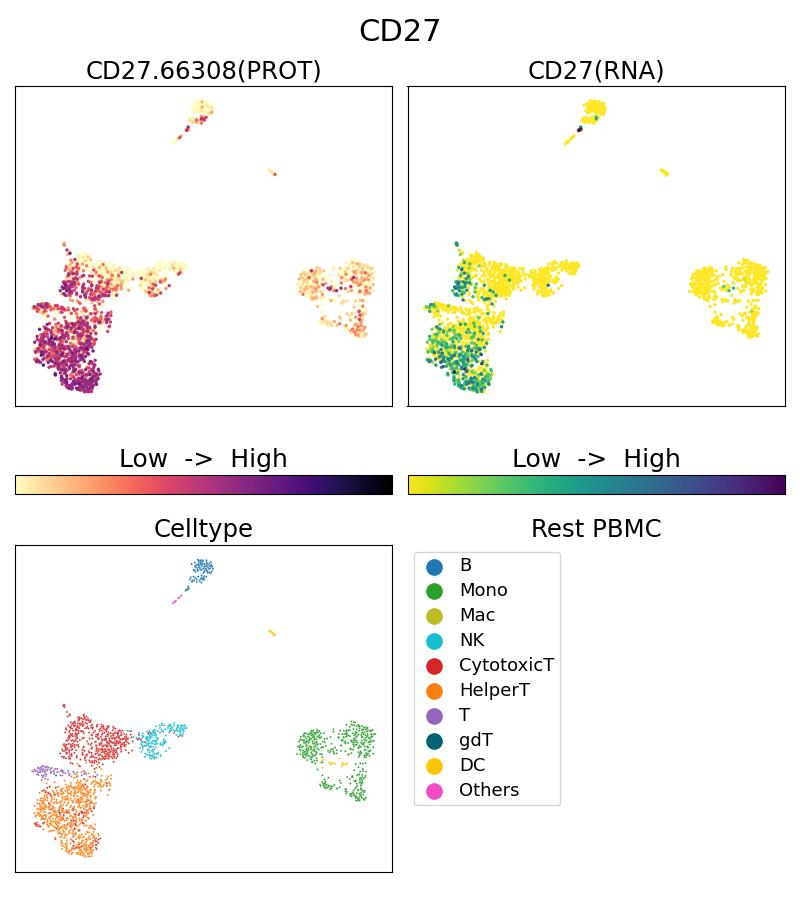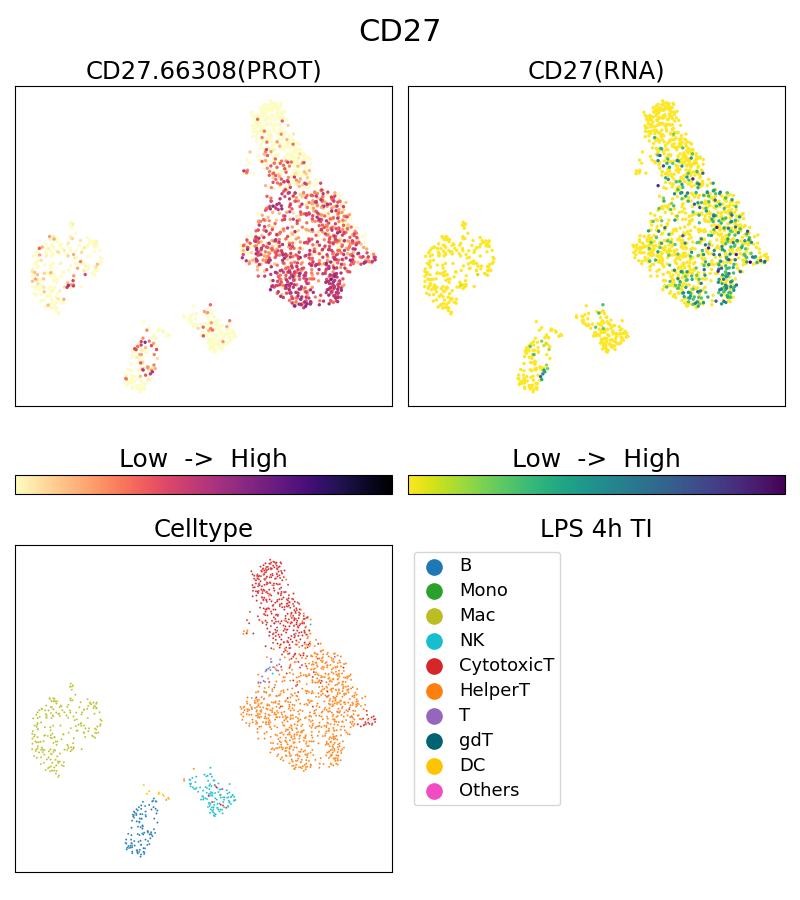Tested Applications
| Positive Single Cell (Intra) detected in | 10x Genomics Gene Expression Flex with Feature Barcodes and Multiplexing product. |
| Positive Single Cell detected in | 10x Genomics Gene Expression Flex with Feature Barcodes and Multiplexing product. |
Recommended dilution
| Application | Dilution |
|---|---|
| SINGLE CELL (INTRA) | <0.5ug/test |
| SINGLE CELL | <0.5ug/test |
| It is recommended that this reagent should be titrated in each testing system to obtain optimal results. | |
Product Information
G66308-1-5C targets CD27 in Single Cell (Intra), Single Cell applications and shows reactivity with Human samples.
| Tested Reactivity | Human |
| Host / Isotype | Mouse / IgG1 |
| Class | Oligo Conjugate |
| Type | Monoclonal |
| Immunogen |
CatNo: Ag24537 Product name: Recombinant human CD27 protein Source: e coli.-derived, PET30a Tag: 6*His Domain: 1-260 aa of BC012160 Sequence: MARPHPWWLCVLGTLVGLSATPAPKSCPERHYWAQGKLCCQMCEPGTFLVKDCDQHRKAAQCDPCIPGVSFSPDHHTRPHCESCRHCNSGLLVRNCTITANAECACRNGWQCRDKECTECDPLPNPSLTARSSQALSPHPQPTHLPYVSEMLEARTAGHMQTLADFRQLPARTLSTHWPPQRSLCSSDFIRILVIFSGMFLVFTLAGALFLHQRRKYRSNKGESPVEPAEPCRYSCPREEEGSTIPIQEDYRKPEPACSP Predict reactive species |
| Full Name | MultiPro® 5CFLX Anti-Human CD27 (1C1G3) |
| Calculated Molecular Weight | 29 kDa |
| GenBank Accession Number | BC012160 |
| Gene Symbol | CD27 |
| Gene ID (NCBI) | 939 |
| ENSEMBL Gene ID | ENSG00000139193 |
| RRID | AB_3673946 |
| Conjugate | 5CFLX |
| Full Oligo Sequence | CGGAGATGTGTATAAGAGACAGTGTGAGCGCAATCAGCCCATATAAGAAA |
| Barcode Sequence | TGTGAGCGCAATCAG |
| Form | Liquid |
| UNIPROT ID | P26842 |
| Storage Buffer | PBS with 1mM EDTA and 0.09% sodium azide , pH 7.3. |
| Storage Conditions | 2-8°C Stable for one year after shipment. |
Background Information
CD27 (also known as TNFRSF7) is a type I glycoprotein expressed on some B cells and the majority of T cells, and is a member of the tumor necrosis factor (TNF) receptor family. CD27 is required for generation and long-term maintenance of T cell immunity (PMID: 11062504). It is a receptor for CD70 (CD27L). Ligation of CD27 by CD70 induces strong ubiquitination of TRAF and the activation of both canonical and non-canonical NF-kappaB pathways, as well as the JNK pathway (PMID: 19426224). CD27 may also play a role in apoptosis through association with SIVA1.
Protocols
| MultiPro™ Cell Surface and Intracellular Staining Protocol | Download protocol |
| 10x Genomics Cell Surface Protein Only Staining Protocol | Download protocol |










